《中级会计学 英文版 第4版》
| 作者 | (美)托马斯 R.戴克曼(Thomas R.Dyckman) 编者 |
|---|---|
| 出版 | 北京:机械工业出版社 |
| 参考页数 | 1376 |
| 出版时间 | 1999(求助前请核对) 目录预览 |
| ISBN号 | 7111064429 — 求助条款 |
| PDF编号 | 82076958(仅供预览,未存储实际文件) |
| 求助格式 | 扫描PDF(若分多册发行,每次仅能受理1册) |

CONTENTSPART ⅠFOUNDATION AND REVIEW1
Company Name Index1
Annual Report—The Coca-Cola Company AR-1
1 The Environment of Accounting2
Introduction2
Subject Index4
Objective of Financial Reporting for ExternalDecision Makers4
External versus Internal Accountinglnformation4
The Nature of Financial Accounting4
Professional Accounting5
The Interaction of Financial Accounting with ltsEnvironment7
The Need for Financial ReportingStandards8
The Evolution of the Current Standard-SettingProcess10
The Financial Accounting Standards Board10
Board Pronouncements11
What Are GAAP?13
Official Accounting Pronouncements Related toGAAP13
The Hierarchy of Accounting Standards forFinancial Reporting14
The Internal Revenue Service14
Impact of Other Organizations on GAAP14
American Institute of Certified PublicAccountants15
Securities and Exchange Commission16
American Accounting Association16
Financial Executives Institute and Institute ofManagement Accountants17
Attaining Consensus in a PoliticalEnviromnent17
Governmental Accounting StandardsBoard17
Other Groups17
Ethics and Financial Reporting21
Summary of Key Points22
Review Problem23
2 The FASB s Conceptual Framework ofAccounting29
Introduction29
The FASB s Conceptual Framework30
Overview of the FASB s Conceptual Frameworkof Accounting31
SFAC No.1:Objectives of Financial Reporting byBusiness Enterprises32
Users of Financial Statements32
Financial Reporting Objectives33
SFAC No.2:Qualitative Characteristics ofAccounting Information34
Environmental Assumptions36
Measurement Criteria36
SFAC No.5:Recognition and Measurement inFinancial Statements of BusinessEnterprises36
Recognition Criteria36
Implementation Guidelines38
Implementation Constraints42
SFAC No.6:Elements of Financial Statements ofBusiness Enterprises44
Acceptance of SFAC No.544
General-Purpose Financial Statements44
Summary of Key Points48
Review Problem48
Appendix:Comprehensive Income(not currentlyGAAP)49
3 Review:The Accounting InformationProcessing System61
Introduction61
Accounts and Transaction Recording62
The AIS and the Accounting Cycle64
Step 1:ldentify Transactions or Events to BeRecorded64
Step 2:Journalize Transactions andEvents66
Step 3:Post from Joumals to Ledger66
Step 4:Prepare Unadjusted Trial Balance67
Step 5:Journalize and Post Adiusting JournalEntries69
Deferrals69
Other Adjusting Entries71
Accruals71
Step 6:Prepare Adjusted Trial Balance75
Step 7:Prepare Financial Statements76
Step 8:Journalize and Post Closing JournalEntries77
lncome Statement Accounts77
Dividends79
Step 9:Prepare Post-Closing Trial Balance79
Step 10:Journalize and Post Reversing JournalEntries79
Accrued Item80
Deferred Item-Expedient Method80
The Management Discussion and AnalysisSection81
Beyond the Primary Financial Statements81
Summary of Key Points82
Review Problem83
Appendix 3A:Worksheets,the Accounting Cycle,and Interim Reporting86
Appendix 3B:Control Accounts.SubsidiaryLedgers.and Special Journals90
Introduction113
4 Review:The Income Statement and theRetained Earnings Statement113
What the Income Statement Represents115
Format Issues Evolving from GeneralPractice117
General Formats of the IncomeStatement117
The Choice between Single -and Multiple-StepFormats119
Format Issues Govemed by AccountingPronouncements121
Reporting Extraordinary Items122
Reporting Unusual or Infrequent Gains andLosses124
Reporting Discontinued Operations124
Reporting Accounting Changes131
Disclosure Guidelines for the IncomeStatement134
Earnings per Share134
Retained Earnings Statement136
Appropriations of and Restrictions on RetainedEarnings137
Prior Period Adjustments137
Summary of Key Points139
Revlew Problem139
Appendix:Conceptual Issues in the Determinationof Income141
5 Review:The Balance Sheet and theStatement of Cash Flows163
Introduction163
The Balance Sheet165
Format of the Balance Sheet165
Basic Definitions and Classifications167
Assets169
Liabilities172
Owners Equity173
Offsetting Assets and Liabilities175
Additional Reporting Issues175
Loss and Gain Contingencies175
Valuations Reported in the Balance Sheet176
Terminology177
Comparative Statements177
Subsequent Events178
Disclosure Notes179
The Auditors Report179
Usefulness of the Balance Sheet181
Limitations of the Balance Sheet182
The Statement of Cash Flows183
Basic Definitions183
Statement Formats186
Ratio Analysis188
Usefulness of the Statement of Cash Flows188
Ratios that Mcasure Liquidity(Solvency)189
Ratios that Measure Efficiency(Activity)190
Ratios that Measure Equity Position andCoverage190
Ratios that Measure Profitability190
Summary of Key Points192
Review Problem192
6 Interest:Concepts of Future andPresent Value216
Introduction216
Time Value of Money217
Basic Interest Concepts217
Concept of Interest217
Consistent Interest Periods andRates218
Simple versus Compound Interest218
Overview of Future Value and PresentValue219
Future Value and Present Value Tables andFormulas220
Single Principal Amount220
The Ordinary Annuity and the AnnuityDue220
Annuity Amount220
Future Value of 1221
Values of a Single Payment221
Future Value and Present Value of 1:CalculationMethods Compared and Computed222
Presen tValue of 1222
Accounting Applications of a SinglePayment224
Future Value of a Single Payment224
Determining an Unknown Interest Rate orUnknown Number of Periods225
Interpolation of Table Values225
Present Value of a Single Payment226
Determining the Interest Rate227
Values of an Annuity227
Future Value of an Ordinary Annuity227
Present Value of an Ordinary Annuity228
Future Value of an Annuity Due229
Accounting Applications of an Annuity230
Present Value of an Annuity Due230
Future Value of an Annuity231
Present Value of an Annuity233
Determination of Other Values Related to theFuture Value of an Annuity233
Using Multiple Present and FutureValues235
Determination of Other Values Related to thePresent Value of an Annuity235
Summary Table237
Summary of Key Points238
Review Problem239
Appendix:Present and Future Value InterestTables240
PART ⅡASSET RECOGNITION ANDMEASUREMENT261
7 Revenue and Expense Recognition262
Introduction262
The Concepts of Revenue and Expense264
The Earnings Process264
The Recognition Process265
The Revenue Principte266
Revenue Recognized at Delivery(Point of Sale)268
Revenue Recognition before Delivery268
Guidance on the Choice between the TwoMethods269
Measuring Progress toward Completion269
Illustration of Altemative Methods of Accountingfor Long-Term Contracts270
Revenue Recognition When Right of ReturnExists270
Review Problem:Revenue Recognition afterDelivery278
Installment Sales Method of RevenueRecognition281
The Cost Recovery Method288
Review Problem290
Alternative Methods ot Revenue Recognition beforeDelivery292
Completion of Production292
Discovery Basis292
Accretion Basis292
Specific Performance Method293
Revenue Recognition for Service Sales293
Proportional Performance Method294
Completed-Performance Method294
Collection Method294
Matching:An Implementation Principle295
Expense Recognition295
Direct Expenscs296
Indirect Expenses296
Recognition of Gains and Losses296
Ethical Considerations297
Summary of Key Points298
8 Cash and Receivables311
Introduction311
Accounting for Cash312
Characteristic of Cash and CashEquivalents312
Internal Controls for Cash313
Petty Cash Funds314
Control of Cash through Bank Accounts315
Accounting for Receivables319
Recognition and Measurement ofAccounts Receivable319
Events and Accounting Entries for UncollectibleAccounts—The Allowance Method322
Measurement of Uncollectible AccountsReceivable322
Estimating Bad Debt Expense—The AllowanceMethod323
Direct Write-Off of Uncollectible Accounts327
Use of Accounts Receivable to Obtain ImmediateCash327
Factoring Accounts Receivable328
Assignment and Pledging of AccountsReceivable332
Recognition and Measurement of NoresReceivable334
Disclosure of Accounts Receivable FinancingArrangements334
Notes Receivable Accounting Illustrations336
Accounting for Loan Impairments339
Discounting Nores Receivable343
Dishonored Notes345
Summary of Key Points346
Review Problem347
9 Inventory:Basic Valuation Methods374
The Importance of Inventories374
Introduction374
Inventory Categories376
Items Included in Inventory377
Periodic Inventory System379
Inventory Recording Methods379
Purchase Discounts(Cash Discounts on CreditPurchases)379
Components of Inventory Cost379
Freight-In(Freight on Purchases)379
Perpetual Inventory System381
Accounting for Periodic and PerpetualSystems381
Allocation of Costs to Inventory and Cost ofGoods Sold385
Measurement of Inventory Values for AccountingPurposes385
Inventory Cost Flow Methods386
Underlying Concepts of Cost Flow386
Reporting Inventories387
Specific Cost Identification Method387
Average Cost Method388
First-In,First-Out Cost Method390
Last-In.First-Out Method392
Comparison of LIFO with FIFO393
LIFO:Special Topics395
Adoption of LIFO395
LIFO Liquidation396
Management Selection of LIFO versus FIFO397
Pooled LIFO399
Dollar Value LIFO Concepts401
Dollar Value LIFO Method401
Applying the DV LIFO Method:A SimpleExample402
Dollar Value LIFO:Complications403
Comprehensive Dollar-Value LIFO:Example403
Decreases in the Value of the Inventorv Valued atBase-Year Prices404
Advantages of DVLIFO405
Summary of Key Points406
Review Problem406
Introduction430
10 Inventory:Alternative Valuation Methods430
LCM Inventory Valuation Method431
Net Realizable Value and Net Realizable ValueLess a Normal Profit Margin432
Establishing Inventory Valuations underLCM433
Applications of the LCM Rule435
Accounting Problems in Applying LCM435
The Use of LCM for Tax Reporting440
Review Problem440
Gross Margin Method and InventoryEstimation441
The Retail Inventory Method and InventoryEstimation443
Markups and Markdowns444
Application of the Retail InventoryMethod445
Retail Method. FIFO with LCM,Illustrated446
Retail Method.Average Cost with LCM.Illustrated446
Special Items Related to the Retail Method447
Using the Retail Inventory Method with DVLIFO449
Review Problem449
The Need for a Physical Count ofInventory450
Evaluation of the Retail Inventory Method450
Uses of the Retail Inventoy Method452
Review Problem453
Methods of Inventory Valuation454
Additional Inventory Issues454
Relative Sales Value Method456
Losses on Purchase Commitments456
Effects of Inventory Errors458
Review Problem460
Summary of Key Points460
11 Operational Assets:Acquisition,Disposal,and Exchange486
Introduction486
Valuation of Plant Assets at Acquisition487
Classifying Operational Assets487
General Principles for the Valuation of PlantAssets488
Plant Assets Purchased on Credit494
Accounting for Noncash Acquisitions of PlantAssets494
Plant Assets Acquired in Exchange for EquitySecurities495
Donated Assets496
Self-Constructed Assets497
Capitalization of Interest during Construction499
Qualifying Assets500
Avoidable Interest500
Conditions for Capitalizing Interest501
Qualifying Expenditures501
Calculating Capitalized Interest501
Effect of Interest Capitalization on FinancialRatios504
Accounting for Disposals of Plant Assets504
Disposal by Donation505
A General Valuation Principle506
Reclassification of Plant Assets Removed fromService506
Accounting for Exchanges of NonmonetaryAssets506
Gain or Loss on Exchange507
Recognition of Gains and Losses onExchange507
Fair Value Determination508
Examples of Nonmonetary Asset Exchanges508
Evaluation of Accounting for NonmonetaryExchanges511
General Accounting Principles511
Post-Acquisition Expenditures511
Improvements.Replacements.and ExtraordinaryRepairs512
Maintenance and Ordinary Repairs512
Additions513
Rearrangements and Other Adjustments514
Summary of Key Points514
Review Problem515
Appendix:Interest Capitalization Complications516
12 Operational Assets:Depreciation andImpairment540
Introduction540
Depreciation Concepts541
Terminology541
Nature of Depreciation542
Factors in Determining Depreciation Expense543
Depreciation Methods544
Straight-Line Method545
Methods Based on Inputs and Outputs545
Accelerated Depreciation Methods547
Tax Depreciation Methods549
Present-Value-Based Depreciation Methods551
Effect of Depreciation on Financial Ratios552
Depreciation Disclosures and Policy552
Diversity of Practice553
Early Warning Disclosures554
Depreciation,Cash Flow,and DividendPolicy554
Depreciation and Price-Level Changes556
Fractional-Year Depreciation556
Additional Depreciation Issues556
Depreciation of Post-Acquisition Costs558
Depreciation Systems559
Impairment of Plant Assets561
Accounting Guidelmes of SFAS No.121562
Implementation of SFAS No.121566
Restructuring Charges567
Summary of Key Points569
Review Problem570
Appendix 12A:Casualty Insurance571
Appendix 12B:Effects of Price-Level Changes574
13 Intangible Assets and Natural Resources593
Introduction593
Intangible Assets594
Classification of Intangible Assets594
Basic Principles of Accounting for IntangibleAssets595
Exchangeable Intangible Assets597
Patents597
Copyrights598
Trademarks and Trade Names598
Deferred Charges599
Separately Identifiable but Not ExchangeableIntangible Assets599
Franchise Rights599
Leasehold Improvements599
Startup Costs600
Organization Costs600
Stock Issuance Costs600
Measuring Goodwill601
Conceptual Nature of Goodwill601
Goodwill:An Unidentifiable Intangible Asset601
Negative Goodwill604
Amortizing Goodwill605
Disclosures and Reporting of Intangible Assets606
Research and Development Costs607
Accounting for Computer Software Costs609
Capitalization of Computer Software Costs609
Amortization for Capitalized Computer SoftwareCosts611
Disclosures of Computer Software Costs612
Accounting for Natural Resources613
Depletion Base613
Depletion Base and Depletion Rate615
Determining Exploration Costs to Capitalize forOil and Gas Companies616
Change in Estimate616
Depletion for Income Tax Reporting616
Summary of Key Points620
Review Problem621
Appendix:Estimating Goodwill622
Introduction647
14 Investments in Debt and EquitySecurities647
Why Invest in Financial Instruments?648
Accounting Issues649
Overview:Classifying Investments649
Debt or Equity?650
Classification of Investments in EquitySecurities651
Classification of Investments in DebtSecurities652
Definitions653
Fair Value Method:Trading Securities andSecurities Available for Sale653
Acquisition of Trading Securities and SecuritiesAvailable for Sale653
Basket Purchases of Securities654
Recording Fair Value as Post-Acquisition CarryingValue655
Recording Investment Income656
RecIassifications of TS and SASInvestments657
Rationale for Different Treatments of HoldingGains or Losses657
Impairments of TS and SASInvestments659
Sales of TS and SAS Investments659
Investment Income of Debt Securities Acquired ata Premium or Discount660
Disclosures for Investments Accounted for by theFair Value Method661
Tax Effects661
Review Problem662
Cost and Amortized Cost Methods664
Cost Method:For Investments in EquitySecurities with No Readily DeterminableFair Value664
Amortized Cost Method:For Held-to-MaturityDebt Securities665
Equity Method:Investments in Equity SecuritiesResulting in Significant Influence over theInvestee666
Conceptual Basis Underlying the EquityMethod667
Equity Method Illustrated668
Summary of the Equity Method671
Changing between the Fair Value Method and theEquity Method672
Definition of FinanciaIInstrument674
Disclosures Required for Investments Accountedfor by the Equity Method674
Disclosures of Fair Values of Other FinancialInstruments674
Disclosures Regarding Risks of Off-Balance-SheetFinancial Instruments675
Special Problems in Accounting for EquityInvestments676
Investment Revenue676
Stock Rights on Investment Shares678
Stock Split of Investment Shares678
Summary of Key Points680
Review Problem681
Appendix 14A:FinancialInstruments683
Appendix 14B:Other Investments and Funds689
PART ⅢLIABILITIES713
Introduction714
15 Short-Term Liabilities714
What Is a Liability?715
Accounts Payable717
Short-Term Notes Payable717
What Is a Current Liability?717
Cash and Scrip Dividends Payable720
Accrued Liabilities720
Advances and Returnable Deposits720
Uneamed Revenues721
Taxes721
Conditional Payments724
Current Maturities of Long-Term Debt726
Obligations Callable on Demand by theCreditor726
Short-Term Obligations Expected to BeRefinanced727
Accounting for Contingencies728
Loss Contingencies That Require Accrual and theRecognition of a Liability729
Loss Contingencies that Are Disclosed Onlyin Notes731
Executory Contracts731
Gain Contingencies731
Accounting for Environmental Liabilities732
Summary of Key Points733
Review Problem734
Appendix:SFAS NO.112—Employers Accountingfor Postemployment Benefits735
16 Long-Term Liabilities758
Introduction758
Characteristics and Valuation of Long-TermLiabilities759
The Measurement and Valuation of Long-TermLiabilities760
Bonds Payable760
C1assification of Bonds762
Valuation of Bonds Payable762
Fundamental Bond Accounting Principles765
Review Problem770
Bond Issue Costs771
Additionat Issues in Accounting for Bonds771
Bonds Issued between Interest Dates772
Review Problem774
Debt Securities with Equity Rights775
Bonds with Detachable Stock PurchaseWarrants775
Convertible Bonds776
Accounting and Reporting for ConvertibleBonds777
Induced Conversion of Convertible Debt778
Debt Extinguishment779
Extinguishment of Bonds by Open-MarketPurchase or Exercise of Call Privilege781
Extinguishment of Bonds by Refunding783
Summary of Gain and Loss Classification784
Review Problem784
Long-Term Notes785
Off-Balance-Sheet Financing and Disclosures forLong-Term Liabilities787
Unconditional Purchase Obligations787
Disclosures for Financial Instrumeuts787
Summary of Key Points790
Review Problem791
Appendix 16A:Troubled Debt Restructure792
Appendix 16B:Accounting for Serial Bonds798
Appendix 16C:Accounting Principles forInvestments in Debt Securities Held toMaturity800
17 Accounting for Leases821
Introduction821
Basic Lease Accounting Issnes822
The Lease from the Lessee s Viewpoint823
The Lease from the Lessor s Viewpoint825
Advantages of Leasing826
Disadvantages of Leasing826
Accounting for Operating Leases827
Accounting for Capital Leases828
Accounting for Capital Leases:Lessee829
Accounting for Capital Leases:Lessor833
Review Problem833
Termination of Lease Agreements835
Lease Entries under an Ordinary Annuity836
Review Problem837
Special Issues in Accounting for Capital Leases838
Bargain Purchase Options838
Bargain Renewal Options840
Residual Values840
Different Interest Rates847
Depreciation of a Leased Asset by theLessee849
Executory and Initial Direct Costs849
Review Problem851
Sale-Leaseback Arrangements851
Classification of Lease Receivables andPayables854
Lease Disclosure Requirements856
A Continuing Issue857
Summary of Key Points858
Review Problem859
Appendix:Other Types of Leases861
18 Accouunting for Pensions and OtherPostemplnyment Benefits886
Introduction886
Pension Plan Fundamentals887
Types of Pension Plans888
Vesting of Benefits889
Pension Plan Funding889
Role of Actuaries889
Regulation of Private Pension PlanFunding890
Minimum Funding Standards890
Summary of Current Pension Accounting890
Minimum Vesting Standards890
Measuring Pension Expense in DefinedBenefit Plans891
Recognizing Pension Liabilities in DefinedBenefit Plans891
Measuring Pension Expense and PensionObligations891
Discount Rate891
Pension Expense893
Service Cost:Component 1 of PensionExpense893
Interest Cost and Actual Return:Components2 and 3 of Pension Expense,SecondYear896
Review Problem899
Components 4,5,and 6 of Pension Expense;General Considerations900
Prior Service Cost:Component 4 of PensionExpense901
Gains and Losses:Component 5 of PensionExpense904
Review Problem910
Transition Amount:Component 6 of PensionExpense911
Additional Minimum Pension Liability913
Coca-Cola s Pension Expense913
Additional Minimum Pension Liability914
Total Minimum Liability914
Adiusting the Accounts916
Coca-Cola s Pension Liabilities917
Review Problem917
SFAS No.87:A Compromise918
Additional Issues in PensionAccounting918
Settlements,Curtailments,Termination Benefitsand Asset Reversions919
Comprehensive Case and PensionDisclosures920
Comprehensive Case920
Required Footnote Disclosures for Defined BenefitPlans926
Other Pension Disclosures927
Review Problem928
Summary of Key Points928
Appendix:Accounting for Postretirement BenefitsOther than Pensions931
Introduction970
19 Accounting for Income Taxes970
Two Types of Differences971
Defining Taxable Income and Pretax AccountingIncome971
Why Income Taxes?971
Conceptual Issues971
The No-Allocation Method976
The Allocation Method of Accounting for TemporaryDifferences977
Asset/Liability Method977
Terminology and Definitions979
Implementation Procedures980
Identifying Future Taxable and DeductibleAmounts983
Illustrations of Deferred Tax Assets and DeferredTax Liabilities984
Review Problem989
Net Operating Losses990
Carrybacks and Carryforwards of Net OperatingLosses990
Accounting for NOLs991
A Limitation on Deferred Tax Assets993
Evidence to Consider in Determining Whether aValuation Allowance Is Needed993
Tax-Planning Strategies998
Review Problem999
Financial Statement Presentation andDisclosures1001
Intrapefiod Tax Allocation1004
Summary of Key Points1004
Additioual Disclosures1004
Review Problem1005
Appendix:Investment Tax Credit and AdditionalConceptual Issues1008
PART ⅣOWNER S EQUITY1025
20 Corporations:Contributed Capital1026
Introduction1026
Formation of a Corporation1027
Contributed Capital at the Formation of aCorporation1027
Characteristics of Capital Stock1028
Concepts and Definitions Fundamental toCorporate Equity Accounting1029
Stockholders Equity:TerminologyIssues1030
Advantages and Disadvantages of the CorporateForm of Organization1031
Par Value Stock1032
Nopar Stock1032
Features of Equity Securities1032
Legal Capital1033
Common Stock1033
Preferred Stock1033
Accounting for the Issuance of Par ValueStock1038
Accounting for the Issuance of NoparStock1038
Capital Stock Sold on a SubscriptionBasis1038
Issuance of Capital Stock for NoncashAssets1041
Special Sa les of Capital Stock1042
Unrealized Capital1043
Stock Issue Costs1043
Assessments on Capital Stock1043
Accounting for Reacquisition ofStock1044
Treasury Stock1044
Recording and Reporting Treasury StockTransactions1045
Formal Retirement of Treasury Stock1049
Retirement of Callable and RedeemableStock1049
Restriction of Retained Earnings for TreasuryStock1049
Accounting for Conversions,Changes in Par Value,and Contributed Capital1051
Concersion of Convertible PreferredStock1051
Stockholders Equity and Financial StatementAnalysis1052
Additional Contributed Capital1052
Changing Par Value1052
Summary of Key Points1054
Review Problem1055
21 Corporations:Retained Earningsand Stock Options1073
Introduction1073
Disposition of Earnings1074
Characteristics of Retained Earnings1075
Nature of Dividends1075
Relevant Dividend Rates1075
Legality of Dividends1076
Property Dividends1077
Types of Dividends1077
Cash Dividends1077
Liquidating Dividends1078
Scrip Dividends1079
Stock Dividends1080
Dividends and Treasury Stock1082
Special Stock Dividends1082
Fractional Share Rights1083
Cash Payments in Lieu of Fractional ShareRights1084
Stock Splits1084
Appropriations and Restrictions of RetainedEarnings1085
Retained Earnings Statements1086
Stock Rights and Warrants1086
Accounting for Stock Rights1088
Review Problem1089
Stock-Based Compensation Plans1092
Overview of Accounting Issues1092
Accounting for Noncompensatory Stock OptionPlans1094
Accounting for Compensatory Stock Option Plansunder APB Opinion No.251095
Lapse of Stock Options1099
Stock Appreciation Rights under APB OpinionNo.251102
Overview:Measuring the Fair Value of FixedStock Options1104
Accounting for Stock Options under SFASNo.1231104
Total Compensation Cost under SFASNo.1231105
Accounting for Fixed Stock Options under SFASNo.231106
Accounting for Performance Options under SFASNo.1231110
Required Disclosures1113
Summary of Key Points1116
Rev iew Problem1117
Appendix 21A:Quasi Reorganizations1119
Appendix 21B:Determining Fair Value ofOptions1120
22 Earnings per Share1142
Introduction1142
Significance of Earnings per Share1143
A Framework for Calculating EPS1144
Types of Capital Structures1144
Calculations for Earnings per Share1146
EPS Disclosures1146
Computing Earnings per Share for Simple CapitalStructures:Basic Earnings per Share1147
Adiustments to the Numerator1147
Adjustments to the Denominator:The Weighted-Average Calculation1148
Stock Dividends and Splits1149
Contingent Shares1150
Review Problem1151
Computing Earnings per Share for Complex CapitalStructures:Diluted Earnings per Share1152
Potentially Issuable Shares1153
Review Problem1155
Review Problem1160
Dilution-Antidilution Method1160
Review Problem1163
Earnings per Share and Related Disclosures1163
A Final Comment1165
Summary of Key Points1166
Review Problem1167
Appendix:A Closer Look at the Treasury StockMethod1167
PART ⅤSpecial Topics1185
23 Statement of Cash Flows1186
Introduction1186
The Trend toward Cash Flows1187
Cash Flow Reporting:Development andUsefulness1187
UsefuIness of Cash Flow Information1188
The Statement of Cash Flows and the Requirementsof SFAS NO.951189
Cash and Cash Equivalents1191
Cash Flow Categories1192
Noncash Activities1194
Gross and Nel Cash Flows1195
Cash Flow per Share1195
Review Problem1195
Preparing the SCF1196
Format-Free Approach:Direct Method1196
Additional Examples of OperatingCash Flows:Direct Method1200
Format-Free Approach:Indirect Method andReconciliation of Net Income and OperatingCash Flow1201
Additional Examples of ReconcilingAdjustments1203
Comparison of Direct and IndirectMethods1204
Disclosure Requirements of SFAS No.951205
Review Problem1206
The Spreadsheet Approach1206
Spreadsheet Approach Example:The SimpleCompany1207
Analyzing More Complex Situations1209
Issues in Cash Flow Reporting1214
Cash or AccruaI Information1214
Classification of Cash Flows1214
Direct or Indirect Method?1215
Summary of Key Points1216
Review Problem1217
Appendix:Comprehensive Example1220
24 Accounting Changes and ErrorCorrections1259
Introduction1259
Accounting Changes:Reporting Issues andApproaches1260
Types of Accounting Changes1260
Objectives of Reporting AccountingChanges1261
Accounting Principle Changes1261
Approaches to Reporting AccountingChanges1262
General Application of the ThreeApproaches1265
Changes in Reporting Entity1265
Justification for Accounting Changes1266
Comparative Statements1267
Summary of Accounting Changes1267
Correction of Accounting Errors1267
Classification of Accounting Errors1268
The All-Inclusive Concept of Income and PriorPeriod Adiustments1271
Correcting Entries and Analysis1271
Detailed Reporting Guidelines andExamples1273
Current Approach1273
Retroactive Approach1277
Prospective Approach1282
Analysis and Reporting of Prior PeriodAdiustments1283
Accounting Changes:An Evaluation1284
Motivations for Accounting Changes1285
Stock Prices and EconomicConsequences1286
Summary of Key Points1287
Review Problem1287
25 Disclosures,Segment Reporting,andInterim Reporting1303
Introduction1303
Full Disclosure1304
Financial Reporting Requirements of theSEC1305
Management Discussion and Analysis1306
Form 10-K1306
Summary of Significant AccountingPolicies1307
Notes to Financial Statements1307
Disagreements on Accounting Disclosures1307
Other Notes to Financial Statements1308
Special Transactions and Events1308
Fraudulent Financial Reporting1310
Segment Reporting1311
Definition of Reportable OperatingSegments1312
Required Segment Disclosures1314
Other Firm-Wide Disclosures1316
Interim Reports1318
Interim Reporting and Segment Reporting1318
Issues in Interim Reporting1318
Interim Reporting Illustrated1320
Summary of Key Points1321
Accounting for Stock Issuance and RelatedTransactions10037
1999《中级会计学 英文版 第4版》由于是年代较久的资料都绝版了,几乎不可能购买到实物。如果大家为了学习确实需要,可向博主求助其电子版PDF文件(由(美)托马斯 R.戴克曼(Thomas R.Dyckman) 1999 北京:机械工业出版社 出版的版本) 。对合法合规的求助,我会当即受理并将下载地址发送给你。
高度相关资料
-

- 国际会计学 英文版
- 1998 沈阳:东北财经大学出版社
-
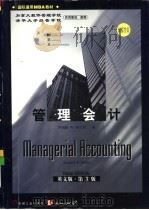
- 管理会计:第3版:英文版
- 1998年07月第1版 机械工业出版社
-

- 财务会计:英文版·第8版
- 1998年07月第1版 机械工业出版社
-

- 基础会计原理 英文版 第14版
- 1998 沈阳:东北财经大学出版社;McGraw-Hill出版公司
-

- 会计学 英文版 第18版
- 1998 沈阳:东北财经大学出版社
-

- 会计学基础 第4版
- 1993 北京:中国农业出版社
-

- 会计理论 英文版 第4版
- 1998 沈阳:东北财经大学出版社
-

- 财务会计 英文版 第4版
- 1998 沈阳:东北财经大学出版社
-

- 国际会计学 英文版·第4版
- 1998 北京:机械工业出版社
-
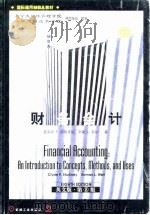
- 财务会计 英文版 第8版
- 1998 北京:机械工业出版社
-
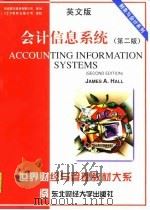
- 会计信息系统 英文版·第2版
- 1998 沈阳:东北财经大学出版社
-

- 管理会计 英文版 第8版
- 1998 沈阳:东北财经大学出版社;McGraw-Hill出版公司
-
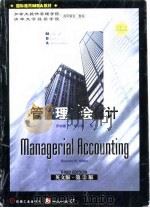
- 管理会计 英文版 第3版
- 1998 北京:机械工业出版社
-
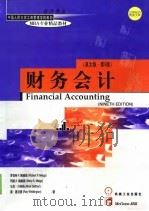
- 财务会计 英文版 第9版
- 1998 北京:机械工业出版社
提示:百度云已更名为百度网盘(百度盘),天翼云盘、微盘下载地址……暂未提供。➥ PDF文字可复制化或转WORD
